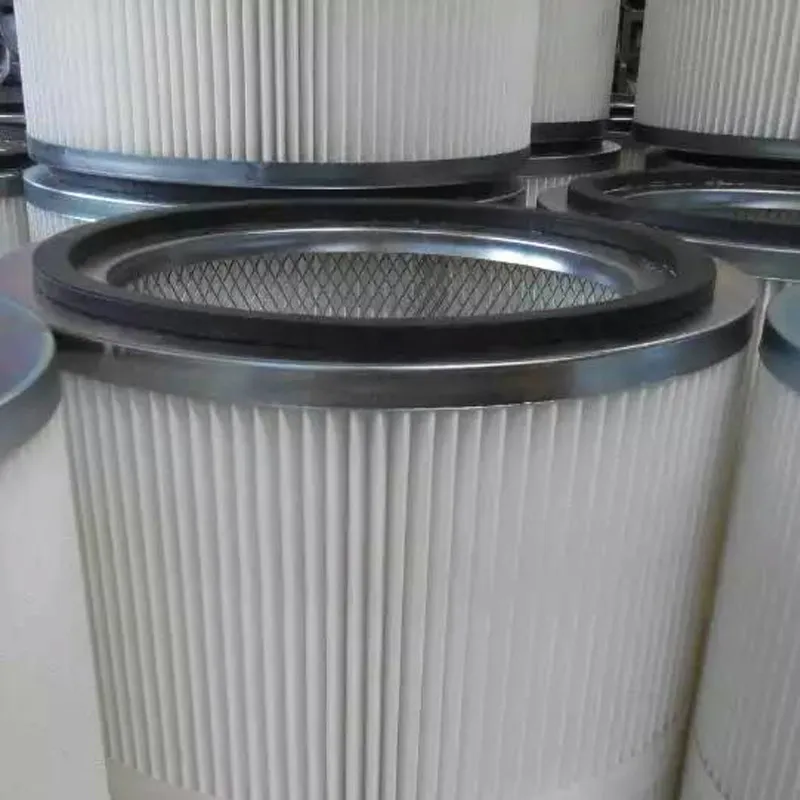 Tel:
+8618931101301
Tel:
+8618931101301
12 月 . 03, 2024 17:58 Back to list
dust cartridge
Understanding Dust Cartridges A Brief Overview
In industrial settings, the effective management of dust is critical for maintaining a safe and productive work environment. Dust cartridges play a significant role in this aspect, functioning as essential components of various filtration systems used to combat airborne particulate matter. This article explores the concept of dust cartridges, their design, applications, and significance in different sectors.
What is a Dust Cartridge?
A dust cartridge is a type of filter designed to capture dust and other particulates from the air. Typically cylindrical in shape, these cartridges are made from a variety of filtration media, such as fiberglass, polyester, or cellulose, which are engineered to trap airborne particles. The primary function of dust cartridges is to prevent dust from circulating in the air, thereby protecting workers’ health and enhancing air quality.
Design and Construction
Dust cartridges consist of multiple layers of filtration media, each designed to capture particles of different sizes. The outer layer generally captures larger particles, while the inner layers are engineered to trap smaller particles. Many dust cartridges also feature a pleated design, increasing the surface area available for filtration without significantly increasing the size of the cartridge. This pleating enhances the cartridge's efficiency, allowing it to capture more dust and extending its lifespan.
One of the critical aspects of dust cartridge design is airflow. A well-designed cartridge allows air to flow freely while effectively capturing dust. This balance decreases the load on the filtration system and ensures that the machinery operates effectively, minimizing energy consumption.
Applications of Dust Cartridges
Dust cartridges are employed in a variety of industries, including manufacturing, construction, woodworking, pharmaceuticals, and food processing. Each of these fields generates particles that can pose health risks if inhaled or if they contaminate products. Here are some common applications
1. Manufacturing In factories where materials like metals, textiles, and plastics are processed, dust cartridges are used to collect hazardous dust generated during production.
2. Construction Construction sites produce various dust types, including silica, which can lead to respiratory issues. Dust cartridges in industrial vacuums help minimize exposure.
3. Woodworking Wood dust is both a health hazard and a fire risk. Dust cartridges in dust collection systems are essential for keeping the workspace clean and safe.
dust cartridge

4. Pharmaceuticals Maintaining contamination-free environments is vital in the pharmaceutical industry. Dust cartridges help ensure that air quality standards are met.
5. Food Processing Dust and particulate matter can contaminate food products. Dust cartridges are employed in ventilation systems to keep the air clean and safe for food production.
Significance of Dust Cartridges
The importance of dust cartridges cannot be overstated. In addition to protecting worker health by reducing exposure to harmful dust and particulates, these cartridges contribute to
- Regulatory Compliance Many industries are subject to strict environmental and occupational health regulations. Employing appropriate dust filtration systems helps companies meet these standards and avoid costly fines.
- Operational Efficiency Clean air allows machinery to operate more smoothly and reduces maintenance costs. A well-functioning dust cartridge can prevent equipment damage caused by dust accumulation.
- Workplace Safety Effective dust control minimizes fire and explosion risks associated with combustible dust, creating a safer work environment.
Maintenance and Replacement
To ensure optimal performance, dust cartridges must be regularly maintained and replaced. Over time, cartridges can become clogged with dust, hindering airflow and reducing efficiency. Most manufacturers provide guidelines on how often cartridges should be replaced based on the specific application and environment. Regular inspections and cleaning are essential practices for prolonging the lifespan of filtration systems and ensuring maximum efficiency.
Conclusion
Dust cartridges are crucial components in various industries, playing a vital role in air quality management and workplace safety. By understanding their design, applications, and significance, industries can better appreciate the necessity of effective dust management systems. As technology advances, the development of more efficient and sustainable dust cartridges will continue to enhance occupational health and safety, providing a cleaner and safer environment for workers across the globe.
-
How to choose a high-efficiency air filter? Here comes a professional guideNewsOct.21,2024
-
Air filter: multi-field application, protecting fresh airNewsOct.17,2024
-
Carbon air filter: a green guard to protect air qualityNewsOct.16,2024
-
Can activated carbon completely remove indoor odors and pollutants in air purification?NewsOct.14,2024
-
How to filter air efficiently and ensure indoor air quality?NewsOct.12,2024
-
Activated carbon filter: the invisible guard of clean water lifeNewsOct.11,2024

 Email:
Email:





